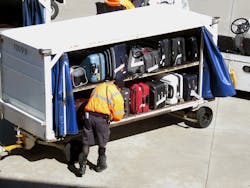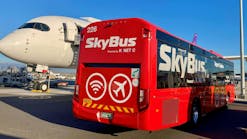The Importance of Safety Apparel for Ground Handlers
Working at the airport can be stressful, no matter what position a person occupies. At least 27,000 ramp accidents occur each year. And while most of those are not fatal, they still present a problem. So, anyone who works as a ground handling agent needs the proper safety equipment.
What Is Ground Handling?
Being a ground handler or a ground handling agent involves a wide variety of jobs and duties. It all depends on where an individual is at the airport and what that person’s specific job is. As its name suggests, this vocation focuses on work surrounding the plane and its passengers while it’s on the ground.
This group of duties consists of two major subgroups: customer service functions and ramp services.
Customer service functions deal with everything directly related to the travelers themselves. Those functions include:
- Ticketing
- Check-ins
- Baggage sorting
- Handling oversized baggage
- Lobby management (i.e., handling check-in desks)
- Irregular operations (e.g., rebooking passengers or choosing different transportation arrangements)
- Special needs handling
- Gate assignment
- Lounge management
- Aircraft boarding and disembarking
- Additional baggage services.
Ramp services cover all work related to ramps, runways and planes, and those are the ones this article will focus on. They cover the following:
- Marshaling the aircraft while it lands
- Placement of chocks and connecting various ground support equipment
- Baggage and freight handling
- Refueling
- Aircraft towing
- Catering
- Provision of documents
- High-pressure air (where and when necessary)
- Pushback (where and when necessary)
- Deicing (where and when necessary).
Potential Risks of Working on the Ramp
While working on the ramp, any number of things can go wrong. As stated earlier, ground handling covers a vast number of different jobs and involves dozens, if not hundreds, of people.
One major risk involves the so-called jet blast. Usually, a large aircraft can produce a strong wind that can blow up to 190 km/h, or 120 mph, at a distance of 60 meter, or 200 feet, behind it. And that occurs when the plane is idle. The numbers increase rapidly as the engine gets pushed up through the power setting. Some jet blasts are even powerful enough to flatten buildings and tumble armored vehicles.
Anything that’s behind the engine during a jet blast will inevitably be blown away. Some of the most common accidents involve overturning vehicles, maintenance stand damages, tools scattering about the runway and personnel suffering from injuries.
Another potential risk involves the aircraft itself running into obstructions. Because of how fast and hectic ground handling can be, an aircraft pilot risks hitting various maintenance or baggage vehicles and platforms. Planes can also bump into each other on the runway, and it’s not uncommon that an aircraft would even run over nearby handlers.
Finally, there are the risks that come with poor weather conditions. Personnel can slip and fall during heavy snow, rainfall or if it’s incredibly windy. The same can happen to the vehicles, including the planes themselves. Unfit weather conditions make braking difficult, which can be dangerous for both the drivers and the people on the ground.
Winter weather also poses a risk for handlers who have to thaw the ice from the plane. They have to use different chemicals and solutions, which are hazardous and affect their health directly.
Hi-Vis Clothing 101
In order to reduce the risk of injury, ground handlers wear different types of safety apparel. By far, the most recognizable is high visibility clothing, also known as hi-vis apparel.
Generally speaking, hi-vis clothing involves shirts, jackets, coveralls, pants and even gloves that people wear in the workplace in order to be noticed. Normally, this clothing consists of two different components:
- Fluorescent elements that contain special pigments brighter than other colors
- Strips of tape or other elements that reflect light back to its original source.
Some hi-vis items out there contain only one of the aforementioned elements, but most industries opt for a combination. Airlines, in particular, use some of the best hi-vis clothes out there, and it is mandatory for all ground handling personnel.
Why Hi-Vis Clothing Helps
The main benefit of hi-vis apparel is the fact that it can be seen anywhere, from any point and during any weather conditions. As stated earlier, human error can cause planes and other vehicles to run over unsuspecting people on the ramp. By wearing a reflective, brightly-colored piece of clothing, the workers are signaling to others where they are. Not wearing such an item will increase the chances of an accident exponentially.
But that’s not the only safety benefit of hi-vis clothing. These items are made to handle any weather, and not just because of high visibility. An average hi-vis jacket, for example, is waterproof and contains materials that keep personnel warm in low temperatures. And because of how they reflect light, these items can be used throughout the day, even during nighttime.
Other Types of Safety Apparel (and Why They Matter)
Naturally, hi-vis clothes are merely one of many different safety apparel items. Depending on what type of work is being handled on the ground, a person will need to wear items such as wireless headsets and gloves.
Wireless headsets are incredibly vital while working on the ramp. Both the aircraft and other vehicles make a lot of noise, so hearing protection is a must. In addition, they help with communication between other handlers and improve situational awareness. And since they are wireless, they enable personnel to use both hands while working as the communicate with coworkers.
An average ground handler must have a pair of heavy-duty work gloves. These items provide powerful protection from blisters, cuts, callouses and injuries while performing various tasks around the ramp. In addition, people who handle deicing chemicals need hand protection in case of an accidental spilling.
Ground Handler Safety Apparel: In Summation
With so many risks, working at the airport might seem intimidating to some. However, when the proper apparel is worn, a shift can be handled safely and stress-free. Whether it’s a hi-vis vest, a pair of gloves or a decent headset, it’s bound to help ground service personnel get through the day without any risks to his or her wellbeing.
Nick Warrick is the sales manager at All Seasons Uniforms, a professional workwear company based outside of Chicago that has been in business since 1991.





